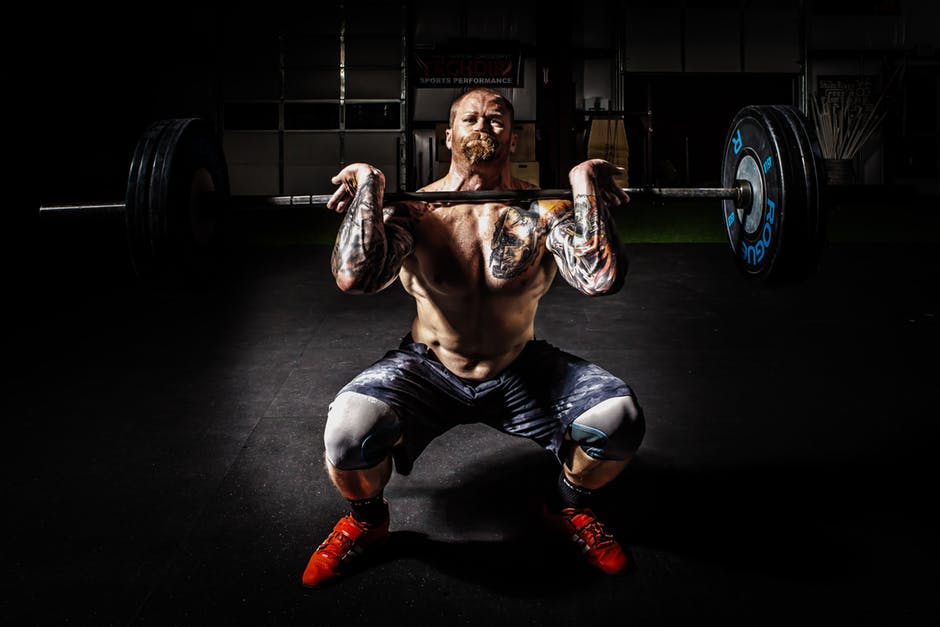The muscles that we see under our skin are made up of muscle fibers that run the entire length of the muscle. These fibers are the cells of the muscle. Beyond just there size, there are a number of factors that have an influence on athletic performance. These include:
• Fiber type: are they fast-twitch, slow-twitch, somewhere in-between? Fast-twitch muscle fibers give you a large amount of force but fatigue quickly, slow twitch just the opposite. So if you are a strength/power athlete you’d want to develop fast-twitch muscle fibers. We also appear to be born with a certain percentage of each and it appears to be impossible to increase the number of fast-twitch muscle fibers unless drugs are involved.
• Fiber length: longer muscle fibers have a greater shortening velocity, very important for speed and power. It has never been clear if this can be influenced by training, in other words it might represent a genetic limitation to power and speed.
• Fiber orientation: Muscle fibers don’t just run straight up and down, they can run at an angle to the tendon. This is called the angle of pennation. Muscle fibers with a smaller angle of pennation (i.e. more straight up and down) shorten faster. Muscle fibers with a greater angle of pennation produce more force and are also associated with larger muscles. The angle of pennation can increase through the right kind of resistance training, but this might have a negative impact on speed. It’s unclear if training can decrease the angle of pennation, so this suggests that care must be taken when designing the resistance training of speed-oriented athletes.
A common issue with investigating these factors is that studies rarely look at real athletes, rarely look at real training programs, and rarely last long enough to get a sense on the impact of the totality of training on the athlete. Nimphius et al, in the October 2012 issue of the Journal of Strength and Conditioning Research have an excellent study that addresses many of these issues and the results are extremely thought-provoking.
The authors followed ten high-level Australian softball players through 20 weeks of training to see how the training impacts performance measures as well as muscle architecture. The 20 weeks of training were organized as follows:
• 3 weeks of general preparation followed by 7 weeks of strength focus in the weight room followed by 7 weeks of power focus (each week had two sessions per week)
• 7 weeks of twice weekly anaerobic/aerobic conditioning followed by 13 weeks of once weekly conditioning
• 8 weeks of speed/agility training once per week
• In addition, during the first seven weeks of the study the athletes focused on individual skill softball work, shifting to team strategies during the last thirteen weeks.
As a result of the training, all the athletes increased their squat 1-RM by more than 10%, increased their speed, agility, and aerobic capacity. So the training was enough to produce results.
What is interesting is the impact of training on the muscle architecture. Looking at the pre to post results:
• The thickness of the vastus lateralis (the muscle studied) increased by more than 3.5%
• The angle of pennation of the vastus lateralis’ muscle fibers decreased (i.e. became more straight up and down) by more than 4%
• The fascicle length (bundle of muscle fibers) of the vastus lateralis increased by almost 10%
Those results, however, are deceptive:
• In terms of muscle thickness: the muscle loses thickness over the first seven weeks, it increases thickness during the second seven weeks of training.
• In terms of angle of pennation: the muscle fibers increase their angle during the first seven weeks, they decrease over the last seven weeks of training.
• In terms of fascicle length: the muscle fibers shorten over the first seven weeks, they lengthen over the last seven weeks of training.
Why are these results interesting? First, it shows that angle of pennation works both ways and tracks with the training. While the athlete is training for strength and hypertrophy, the angle of pennation increases. While they train for speed and power, it decreases. Second, it shows that fascicle length also responds to training (same pattern as the angle of pennation). Third, muscle hypertrophy works on a different timeline than changes in length or changes to angle of pennation and experiences a delayed training effect. The muscles didn’t experience hypertrophy until the last seven weeks of training. So it took a while to get an effect from the training done during the first half of the study.
The timeline response to training is important. Also important is the fact that the angle of pennation and fascicle length increase and decrease as a result of specific training, which suggests that both are a lot more adaptable than I’ve encountered before in the literature. This is actually making me rethink some of the why’s behind my training philosophy with track and field athletes.
Nimphius, S., McGuigan, M.R., and Newton, R.U. (2012). Changes in muscle architecture and performance during a competitive season in female softball players. Journal of Strength and Conditioning Research, 26(10: 2655-2666.


